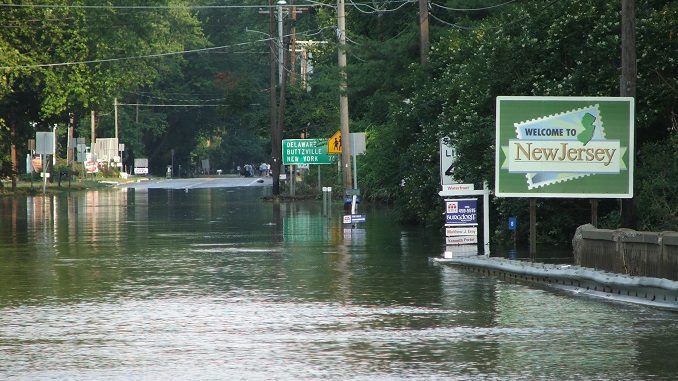
The summer of 2022 has been one of the extreme floods in the United States, and scientists are warning that climate change is responsible for worsening the devastation and destruction.
Global heating is rendering historical norms obsolete. Extreme rainfall has caused massive floods in Yellowstone, Death Valley, Kentucky, St. Louis, Illinois, and more places.
The deadliest of the recent barrage of floods was seen in Kentucky, described by President Joe Biden as “heartbreaking” as he saw ruined homes and inundated cars this week. At least 37 people died after five days of record-shattering rain streamed down mountainsides and drowned entire towns.
Scientists said a flood like that in Kentucky was a once-in 1,000-year occurrence. But these extremes are no longer outliers.
In a short 11-day span, the United States experienced at least four flooding events that are typically expected once every 1,000 years or have a 0.1 percent chance of happening in any given year.
St. Louis broke its one-day rainfall record by 8 am a couple of weeks ago, swamping city streets and houses. The disaster quickly was followed by a similarly severe storm in Illinois.
Death Valley got a year’s worth of rain in only three hours. It caused huge sheets of flooding, washing away and damaging hundreds of miles of roads.
Climate experts are saying that these are no longer one-in-1,000 years events anymore, and the labeling and language around them need to change. Rare events are becoming common, and the infrastructure is not keeping up.
In Yellowstone, a large building was wrenched from its foundations and carried away by surging flood water. The main road entrances to the national park were severed by what officials called “unprecedented” flooding and took a month to fully reopen.
This week, a dozen motorists had to be rescued from the windows of their cars in Denver after intense rainfall caused roads to become pools. Flooding has always happened in the U.S., but the climate crisis has worsened these events and made them more frequent.
The latest assessment by the government found heavy precipitation events have increased in the northeast by 55 percent since the 1950s. Events have grown by 27 percent in the southeast, and in the Midwest, by 42 percent.
As the atmosphere continues to heat up due to the burning of fossil fuels, it holds more water vapor that can be unleashed in massive downpours. Climate change is also causing broader shifts in weather patterns, some of which are not fully understood yet.

Be the first to comment